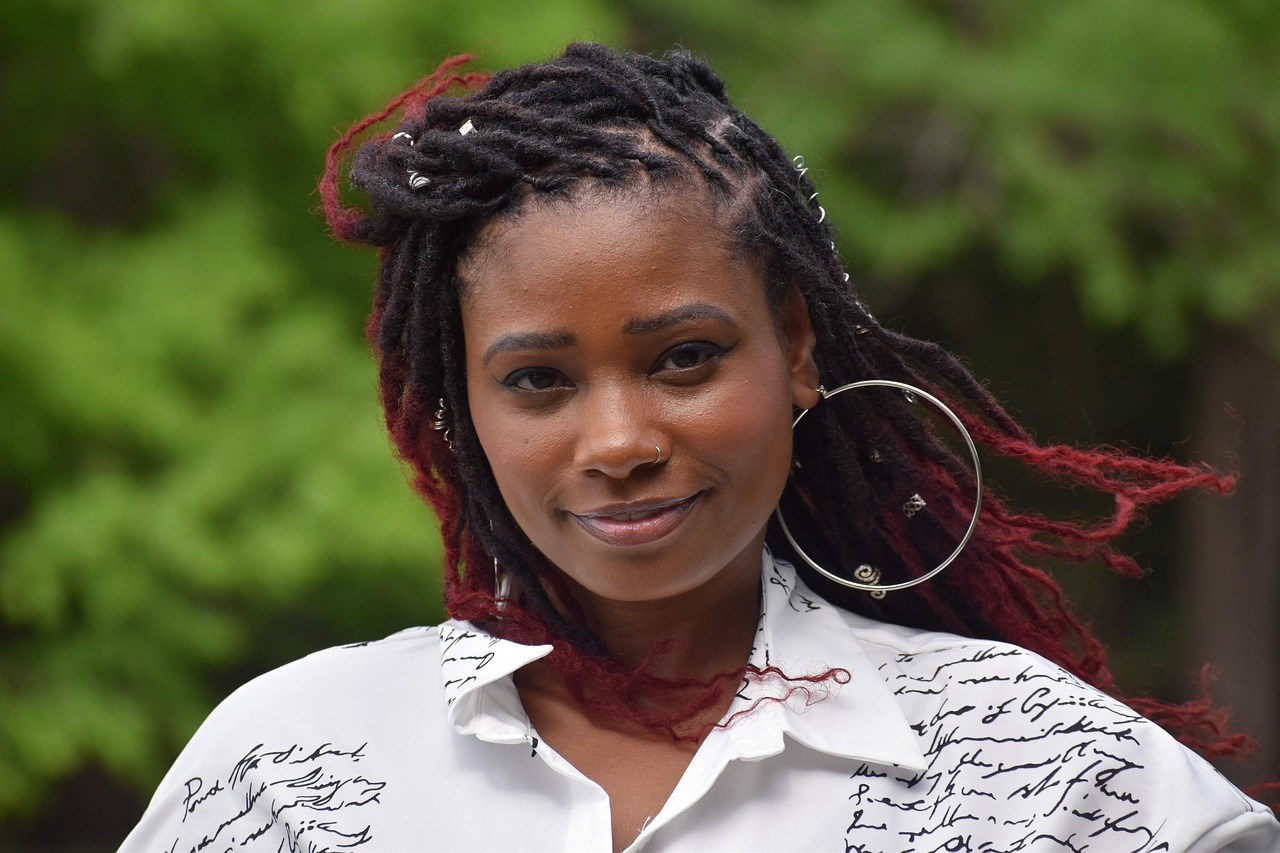Talking about sex should feel straightforward, yet history shows it often wasn’t – and sometimes still isn’t. Long before chatting in DMs or toggling a profile setting, one discreet visual language helped people declare what they wanted without saying a word: the handkerchief code. This pocket-sized system linked colors and placement to specific preferences and roles, allowing quick recognition in a crowded room. While the world is more open today, curiosity about the handkerchief code hasn’t vanished. What it is, how it emerged, how people read it, and why it still pops up in clubs and nightlife – that’s exactly what this guide unpacks, in plain English and without mystery.
Why a cloth square became a conversation
It might seem odd that a patterned square could stand in for a full-fledged talk about intimacy. But context matters. The handkerchief code arose in periods when speaking frankly about sex – and especially queer sex – was discouraged or risky. Under that pressure, a visible accessory became a small shield and a quiet invitation. Instead of negotiating every detail out loud, a quick glance at a color and a pocket side could suggest where to begin. The handkerchief code condensed awkwardness into a compact sign – efficient on a dance floor, in a bar doorway, or on a city street where eye contact had to work fast.
You can think of it this way: the handkerchief code is a simple vocabulary. Color is the noun – it names the interest. Pocket side acts like a verb – it signals a preferred role. Put them together and the message becomes legible to anyone who speaks the same style. That didn’t remove the need for consent or conversation – it only opened the door. Even now, when apps broadcast preferences openly, the handkerchief code still carries a certain wink: part history, part fashion, and part icebreaker.

What the handkerchief code actually is
At its core, the handkerchief code matches a specific color to a specific sexual interest. A handkerchief or bandana is placed in a back pocket – left or right – with each side hinting at a role. Left generally reads as receptive or bottom; right generally reads as insertive or top. That’s the broad grammar of the handkerchief code, a compact pattern that lets the wearer put a preference on display. The colors operate like a visible list, and the pocket side edits the list down further.
That minimal structure is part of the appeal. The handkerchief code uses what clothing already provides – pockets, fabric, motion – to hold a message. Because it’s visual, it travels easily across a loud room, and because it’s removable, it offers a graceful out if someone wants to change the subject. The handkerchief code gives people a way to find one another quickly, and it does so with a kind of playfulness that transforms an accessory into a conversation starter.
Origins that blur into rumor
No single origin story fully explains how the handkerchief code began. Rather than a neat tale with a definitive first appearance, the history arrives as fragments – anecdotes from dance halls, whispers from city folklore, and the memory of decades when speaking openly was harder. One oft-repeated thread points toward a 19th-century scene in San Francisco socials, where the gender ratio skewed heavily male. At those events, dancers reportedly signaled lead and follow roles with blue and red bandanas, roles that mirrored partner dynamics in the absence of women. Whether that practice directly birthed the handkerchief code is uncertain, but the echo is there: fabric, color, position, meaning.

What’s clearer is how the handkerchief code flowered in the 1970s and 1980s. In that era, particularly among gay men, a pocket square became a quick index to interests. When straightforward talk was frowned upon – or outright dangerous – a color code provided cover. The handkerchief code delivered a swift scan-and-recognize system in spaces where hesitation could mean missing a connection. That utility, plus a little theatrical flair, helped it spread.
How to read colors without getting lost
Because the handkerchief code assigns meanings to colors, a list helps. The following items reflect a commonly cited set from nightlife lore. Remember that the handkerchief code is not a legal document – it’s a folk system. Local habits, time periods, or circles of friends can shift interpretations. With that caveat, here’s the widely referenced rainbow set, presented to clarify how people often read it:
Red – associated with fisting.

Orange – an open invitation where anything goes.
Yellow – linked to urolagnia and “golden” play.
Green – tied to escorting or transactional company.
Light blue – a signal for oral interest.
Blue – shorthand for anal interest.
Purple – connected to piercing play.
Grey – a nod toward bondage dynamics.
Black – associated with S&M.
Brown – a sign for scat play.
Keep two realities in mind as you learn this list. First, the handkerchief code is not universal – meanings can vary by region or group. A shade that signifies one interest tonight might carry a different nuance in another city. Second, colors beyond the rainbow exist and can become quite specific. That’s part of the charm and the confusion. The handkerchief code invites precision, and once people embrace a signaling language, they often expand the dictionary.
Beyond the rainbow – more shades, more nuance
The rainbow set is just the beginning. Over time, people added hues to capture ever more distinct interests. A few examples that often appear in expanded charts:
Apricot – a “chubby chaser” signal.
Beige – a reference to rimming.
Dark pink – an indicator for breast or nipple torture.
Charcoal – a pointer to rubber or latex fetish play.
Why charcoal? The story goes that rubber gear dominated that particular scene for a time, and charcoal echoed the material’s look. As tastes evolved, people embraced latex and PVC – but the charcoal swatch lingered as a nod to that earlier period. It’s a good illustration of how the handkerchief code functions: a community picks a color that feels right, it circulates among friends of friends, and suddenly a pocket turns into a glossary entry.
Pocket placement – left and right as an instant role call
The handkerchief code operates on two axes: color and placement. With placement, the back pocket does the heavy lifting. Worn on the left, the handkerchief code usually reads as receptive or bottom – “I receive,” is the implied verb. Worn on the right, the handkerchief code generally reads as insertive or top – “I provide,” is the counterpart. Those cues become even more useful when combined with color, producing a tight little matrix of signals that people can read at a glance.
Notice what isn’t in the classic pocket script: an explicit sign for people who enjoy both roles equally. Some folks improvise or simply let conversation supply the nuance, but the traditional handkerchief code doesn’t specify a dedicated setting for a switch. That absence is instructive – folk codes respond to the patterns a scene prioritizes. When talk is easier, gaps in the code are easier to fill.
How consistency and variation coexist
Ask ten devotees of the handkerchief code to recite the colors, and you may hear slight differences – a variant shade here, a swapped meaning there. That doesn’t make the system useless. Folk languages thrive on overlap rather than lockstep precision. The handkerchief code is legible enough to spark contact, and then conversation does the rest. When traveling, assume minor shifts. Yellow may carry one association in a familiar bar and a slightly different one elsewhere. Reading the room – and politely asking – is part of the etiquette.
It helps to think of the handkerchief code as a living index. The core palette is stable enough to function, while the margins stretch to include new ideas or identities. That flexibility kept the handkerchief code relevant even as technology transformed dating. In an app, you select a tag; in a club, you select a pocket square. Both are ways to provide a heading before the chapter begins.
From clandestine cue to stylish pretext
Today, the handkerchief code often shows up as fashion with a backstory. People still use it as a signal, but equally as often it operates as a knowing flourish – the kind of accessory that invites a playful “So, what does that color mean?” The vibe is different than in earlier decades. Conversation about sex is more common in many places, and social tools make it simple to state a preference explicitly. In that climate, the handkerchief code shifts from necessity to aesthetic – still meaningful, but wrapped in style.
That sense of reinvention encouraged artists and collectives to refresh the palette. In one example from Los Angeles nightlife, creators designed updated hankies that fold in identities and preferences omitted from the earlier schema – transgender identities, outdoor scenarios, and polyamorous relationship structures among them. The handkerchief code, in that light, becomes more than a mood ring; it becomes a quilt of community language, stitched from what a scene values at a given moment.
Reading the code in practice – a gentle walkthrough
Imagine stepping into a packed club with nothing but the handkerchief code as your map. Music hums, conversations braid together, lights pulse. You clock a flash of blue on the right – that suggests a top interested in anal scenarios. Farther along, a light blue square on the left hints at someone seeking oral attention as a receiver. You strike up a hello, not because the color grants automatic consent – it doesn’t – but because the handkerchief code has already warmed the introduction. “Hey, I like your bandana,” is a far easier opening when both of you know that the bandana carries a meaning.
Next, a grey fold catches your eye. Grey whispers bondage, so you check the side. On the right, it suggests someone inclined to give structure; on the left, someone inclined to receive it. The handkerchief code narrows the field, but it never completes the script. Politeness matters. Asking matters. The code is a doorbell, not a master key.
Etiquette that keeps it kind
If you plan to play with the handkerchief code, treat it as a conversation starter – nothing more, nothing less. The best etiquette can be summed up in three small habits:
Check the side – the left/right cue is half the message. Without it, you’ll guess wrong.
Confirm verbally – a color invites a topic, not a guarantee. Ask questions, listen, and set boundaries.
Respect variance – meanings aren’t universal. If someone uses a shade differently, accept their dictionary.
Follow those habits and the handkerchief code remains what it has always been at its best – playful, precise enough to be useful, and flexible enough to feel human.
Why it persists even when apps do the job
Apps let people spell out desires in full sentences. Yet the handkerchief code persists for reasons that are as much cultural as practical. It’s visible – a shared joke in a public space. It’s tactile – cloth, color, the small ritual of choosing a pocket before heading out. It’s historical – a link to nights when a square of fabric did the safety work a profile now does. And it’s social – when two people spot matching cues, the ice breaks itself. The handkerchief code doesn’t replace a chat screen; it creates a stage for one.
Limits you should keep in view
Two cautions help keep expectations grounded. First, the handkerchief code never removed the need for clarity. Even in the 1970s and 1980s, people who used it still had to speak up. A color is not a contract – it’s shorthand. Second, any chart you find is an approximation. The handkerchief code travels by word of mouth, and like any oral tradition, it collects quirks and local dialects. That means you’ll encounter disagreements about meanings. Rather than treating those differences as errors, regard them as accents. The conversation they spark is part of the point.
A longer palette – and the temptation to catalog everything
Over time, lists ballooned. Enthusiasts extended the handkerchief code to dozens of shades – enough to reach into surprisingly specific niches. Some tallies count well over sixty variations. That’s evidence of two human impulses: the desire to name things precisely, and the delight in playful taxonomy. The handkerchief code invites both. People see an unclaimed corner of the palette and fill it with a meaning that suits their scene. The result is a vocabulary that can be as broad or as granular as a community wants.
Still, the practical heart of the handkerchief code remains compact. Most nights, the rainbow set and a few widely recognized extras carry the load. When in doubt, ask. When curious, experiment. The code is a tool – sharpened by use, softened by style, and always subject to revision by the people who wear it.
Fashion, identity, and the social life of a square
Beyond signaling, the handkerchief code survives because it lets people wear a slice of identity right where others can see it. A pocket square brightens denim; a pop of color punctuates leather; a neatly folded triangle peeking from a back pocket turns fabric into a flag. In that sense, the handkerchief code lives at the intersection of desire and design. It’s both statement and accessory, both hint and highlight – the thing you notice as someone passes and the subject you bring up when they turn.
Nightlife thrives on such details. A glance at a belt, a cuff, a bandana – all of it composes a story told in a crowded room. The handkerchief code is one of nightlife’s oldest little scripts, still staged because it’s fun to act out. Even when the message is purely stylistic, it works as a nod to those who know the legend. Wearers get to choose whether the meaning is literal, nostalgic, or simply chic. The same square can be a message on Friday and an ornament on Saturday – that fluidity is part of the appeal.
How to experiment without overthinking it
If you’re curious, start small. Choose a color whose meaning you’re comfortable discussing, and decide which pocket aligns with your role. That’s the basic grammar of the handkerchief code. From there, pay attention to how people respond. Some will clock it instantly; others will just compliment the look. Both outcomes are wins – either you spark a conversation about interests, or you enjoy a style flourish that nods to a rich subculture. The handkerchief code rewards openness and humor – two qualities that make any night better.
What hasn’t changed – and what has
What hasn’t changed is the need to feel seen. The handkerchief code delivers visibility without a monologue – a discreet broadcast that says, “Here’s my general lane.” What has changed is the world around it. In many places, it’s easier now to speak plainly, to list preferences on a screen, to find community without relying on whispers. As a result, the handkerchief code no longer carries the same weight of necessity. Yet it retains a ceremonial charm – a traditional sign revived as fashion, a shared vernacular carried forward by people who enjoy its mix of clarity and camp.
Putting it all together
Seen from a distance, the handkerchief code is surprisingly elegant. Colors point to interests; pockets point to roles; together they build a fast shorthand for connection. The meanings circulate, drift, and return – sometimes steady, sometimes elastic – because real people keep them alive. That elasticity is not a failure of the handkerchief code but its essence. A folk language changes with its speakers. In each revival – whether through expanded palettes that include identities once left out or through a simple nod to nostalgia on a Saturday night – the handkerchief code demonstrates why small symbols endure. They compress complexity into something you can tuck in a pocket – a bright square that says enough to begin.
If you’ve heard the term and always wondered, now you have the map. Whether you use the handkerchief code as a practical signal, a playful wink, or a wearable homage to the scenes that nurtured it, the same simple rule applies – let the square start the talk, and let the talk do the rest.